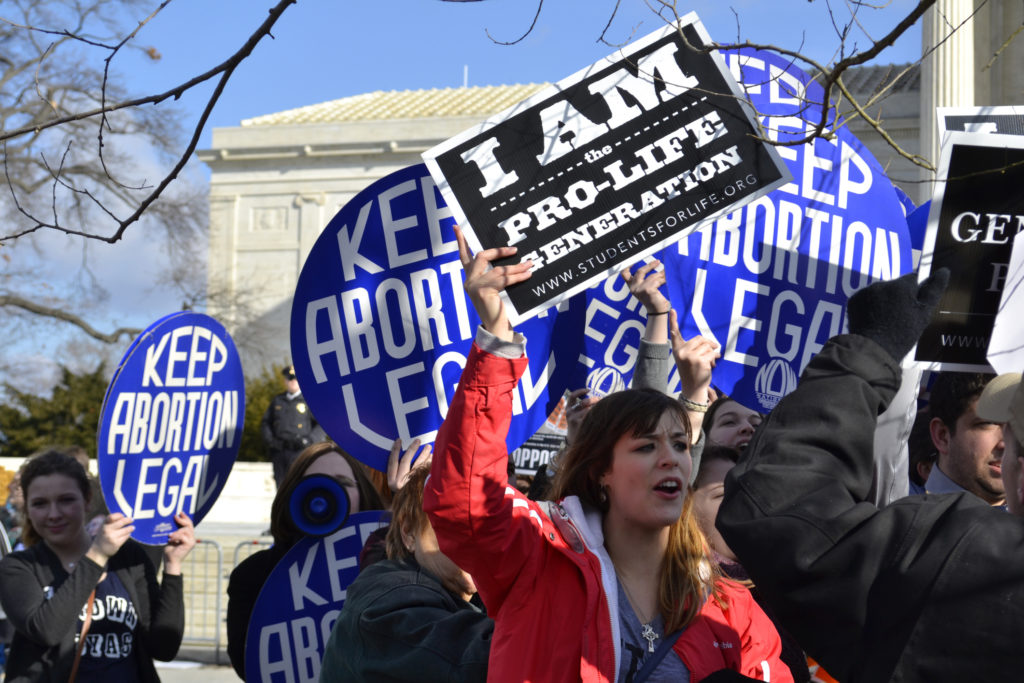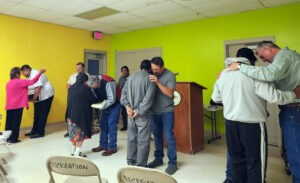
NASHVILLE (BP) – The Supreme Court ruling in Dobbs v. Jackson Women’s Health Organization is only a couple weeks old, and already there are misperceptions, misunderstandings and misconstruals about what abortion law will look like now that Roe v. Wade has been overturned. Here are four main misperceptions that have been expressed in light of the recent ruling and explanations of how to think through them.
Misperception #1: The Supreme Court took away a constitutional right.
In a speech delivered on the same day the Supreme Court released the Dobbs decision, President Joe Biden said, “Today the Supreme Court of the United States expressly took away a constitutional right from the American people that it had already recognized.” Biden is implying that the U.S. Constitution contains a recognizable right to abortion, but the Supreme Court determined that is not the proper reading of the Constitution.
The court explained its reasoning, in part, by considering whether the right to obtain an abortion is part of a broader entrenched right that is supported by other precedents. The majority of the justices concluded that the right to obtain an abortion cannot be justified as a component of such a right, and that attempts to justify abortion through appeals to a broader right to autonomy and to “define one’s ‘concept of existence’ prove too much.” If there was a right to abortion, the court noted, then Roe and Casey would also allow as fundamental rights such things as illicit drug use and prostitution.
There was never a “constitutional right to abortion,” only a legal fiction established by Roe and Casey to give that impression. The Supreme Court did not remove a right held by individuals but merely recognized the reality that the Constitution allows abortion to be an issue decided by the individual states.
Misperception #2: Overturning Roe makes it harder to treat miscarriages and ectopic pregnancies.
“The medical options used to treat some miscarriages, as well as some ectopic pregnancies, can be the same or similar to those prescribed for an abortion,” said the ERLC’s Chelsea Sobolik, “This makes it imperative to carefully define our terms.”
Take, for example, dilation and curettage (in which the preborn baby is removed through surgery) or dilation and evacuation (in which a probe-guided vacuum removes fetal tissue from the uterus). These procedures can be used in elective abortions (in which the child is killed before removal) or in circumstances when the child is already dead and needs to be removed from the woman’s body. Similarly, medications called mifepristone and misoprostol are sometimes used as abortifacients (i.e., medication to cause an abortion), but they can also be used to treat cases of miscarriage.
“There is no current policy in place prohibiting the treatment of miscarriage or ectopic pregnancies, and many laws similarly exclude such circumstances from the definition of abortion,” Sobolik said. But she also points out that this misperception has gained traction because some recently proposed state-level legislation included wording that would affect access to treatment for miscarriage or ectopic pregnancy.
For instance, Sobolik noted that an abortion restriction bill was initially proposed in Ohio in 2019 advocating for the reimplantation of ectopic pregnancies – invoking the use of a nonexistent and medically impossible procedure – but was struck down in hearings. The Ohio lawmaker behind the bill later admitted that he had not researched ectopic pregnancies beforehand.
Such misguided proposals have always been caught before they become law, and pro-life groups are working closely with state legislators to ensure that such unhelpful language does not find its way in any stage of the legislative process.
Misperception #3: Anti-abortion laws do not protect the life of the mother.
On the same day in 1973 that the Roe v. Wade decision was handed down, the Supreme Court also issued its decision in Doe v. Bolton. In that ruling, the court said that a state must permit a “health” exception to any laws restricting abortion. But “health” was defined so broadly that it allowed abortion in all nine months of pregnancy for nearly any reason, including the mental or emotional health of the mother.
Abortion advocates claim that without that “health” exception that women’s lives will be put in danger, but every pro-life statute in states where abortion is being restricted currently has an exception for the life of the mother. Many of the states, such as Utah and Texas, also include exceptions for “harm to the physical health” of the mother along with exceptions for the life of the mother.
Misconception #4: The individual states now have final say about abortion laws.
The ruling in Dobbs says, “The Constitution does not confer a right to abortion; Roe and Casey are overruled; and the authority to regulate abortion is returned to the people and their elected representatives.” While this means that the states can decide the issue, it also leaves open the possibility that a federal law could regulate abortion in all 50 states.
Nothing in the Dobbs opinion prohibits the U.S. Congress from passing federal legislation to restrict, ban or allow abortion. Whether such legislation could pass constitutional scrutiny remains to be seen. For now, given the even divide in the U.S. Senate, states will be tasked with regulating abortion as they see fit, but the possibility does remain that a future Congress could pass federal legislation on the issue.
Many Christians fervently prayed and planned for the overturning of Roe and Casey, yet never dreamed they would actually see the day. Now that it’s here, we rightly rejoice and celebrate. However, we also recognize that many in our broader culture are anxious about what life will be like in a post-Roe world, and that fear is largely supported by misinformation portrayed as fact. We must stand ready to pray for our neighbors and meet them with truth and compassion, demonstrating that a post-Roe culture is indeed a good one where women will be cared for and babies will be given a chance at life.

















